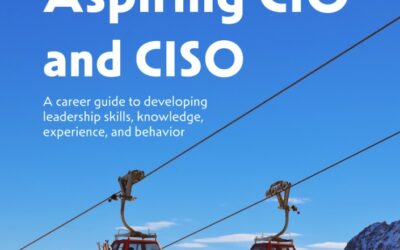Disrupting Digital Business
Create an authentic experience in the peer-to-peer economy
R “Ray” Wang
Harvard Business Review Press
Rs: 895
#DisruptingDigital
@rwangO
It’s always a pleasure to see and hear the eminent analyst Ray Wang during my annual pilgrimage to the Nasscom Industry Leadership Forum every February, in Mumbai. And each time I hear him, there is something new to learn. In February 2015, we had a brief meeting at the end of the conference, and discussed Digital Transformation in the Airline industry. I did not know then, that he was writing this book – which arrived in my mail a month ago.
Disrupting Digital Business is a sharp reminder that business is no longer about products and services. Rather, it is about keeping brand promises, and about customer experiences and outcomes.
Right now we are experiencing a digital business revolution driven largely by consumers. With information readily available, anytime, anywhere, the consumer is much better informed. Consumers are comparing products and services online, and making decisions. They are discussing products on social media channels, thus becoming key influencers for potential buyers.
Wang says the old way of running a business does not work in this digital revolution. Unless organizations overhaul old processes and digitalize, they will be left far behind. You are either going to disrupt or be disrupted. To transform successfully, businesses must have a deep understanding of what it takes to build organizations in a digital age, and on a digital scale. In the digital age, new business models will emerge, and new skill sets will be required.
Digital transformation is not a piece-meal effort; it should not be incremental. It has to be all-encompassing and company-wide. The book elaborates on how organizations must go about building their digital DNA, and how they should embrace disruptive technologies like Internet of Things, predictive analytics, augmented reality, and smart, autonomous systems.
But digital transformation isn’t only about technology — creating a mobile app for your business does not mean you have digitalised a process. Ray says it is as much about having a transformational mind-set and organizational culture too. It’s important for the transformational culture to be infused into the reporting structure – and to get support from all executives in the C-suite.
The book takes a sudden turn as we reach the third chapter. It talks about the importance of putting some Context into data, and about Contextual Relationships. There is a deluge of data available in the digital stream. But businesses are not fully tapping into that wealth of data, and processing it for insights. Transactional data will not tell you too much about your customers. The shopkeeper in the kirana store that you regularly visit will be able to remember your choice of brands, quantities, flavours, colours, frequency of purchace, and other buying habits. That’s a contextual relationship.
The Marriott chain of hotels knows all about contextual relationships. They remember guest preferences. So you are likely to have a highly customised experience, no matter which Marriott hotel you stay in, around the world.
But how is it possible for a business to remember the personal choices of millions of customers? That’s where Mass Personalisation comes in, according to Wang.
Chapter 4 emphasizes Trust & Transparency as being the new currency in the digital world. Trust and transparency drive authenticity that’s required to disrupt digital and drive success.
And as we get to chapter 5, we learn about the disruptive technologies that digital businesses must embrace. Intelligent systems that have predictive analytics capabilities make for an intention-driven mind-set. These are cognitive, self-learning and autonomous systems. They are continuously updating their knowledge banks and making decisions autonomously. They will also be able to make changes to business models and deliver business insights. In that sense, they are almost human. A prominent example is IBM’s Watson supercomputer and the way it is quietly transforming the healthcare industry.
In the pre-internet days, the only way to connect to relatives, friends and business peers was through ‘airmail’ letters, facsimile, ham radio, Morse code, and ‘trunk’ calls. Once the Internet came along, we began emailing and instant messaging each other. And the world of business suddenly shrunk. That’s what Networked Economies are all about. Now that we have social media, these interactions happen instantaneously. But imagine what will happen when devices begin to connect to each other and communicate, almost on their own in an Internet of Things. The sixth chapter on Networked Economies narrates the future impact of this massive hyperconnectivity that will drive $70 – 80 trillion in commerce by 2020 — as predicted by Ray’s firm, Constellation Research. The chapter talks about the factors, force multipliers, models (like Fremium) that are driving networked economies.
And as we get to the seventh and final chapter of the book, we read about living and working in the era of digital business. It is a reality check of what is happening right now in organizations. It elaborates on the five common steps to be successful in the era of digital business.
In summary, Disrupting Digital Business is essential reading for every business that is undergoing digital transformation. Consider this the essential checklist for digital transformation strategy.
—————————————————————————————————————-
PROFILE
 R “Ray” Wang is the Principal Analyst and CEO at Silicon Valley-based Constellation Research and author of the popular business strategy and enterprise software blog, A Software Insider’s Point of View at http://blog.softwareinsider.org/. Ray, who worked previously with Altimeter, Forrester, Oracle, Ernst & Young, and Deloitte, is a prominent keynote speaker and analyst working with clients on digital transformation, innovation, customer experience, and decision management. He advises Global 2000 companies on business strategy and technology selection.
R “Ray” Wang is the Principal Analyst and CEO at Silicon Valley-based Constellation Research and author of the popular business strategy and enterprise software blog, A Software Insider’s Point of View at http://blog.softwareinsider.org/. Ray, who worked previously with Altimeter, Forrester, Oracle, Ernst & Young, and Deloitte, is a prominent keynote speaker and analyst working with clients on digital transformation, innovation, customer experience, and decision management. He advises Global 2000 companies on business strategy and technology selection.









